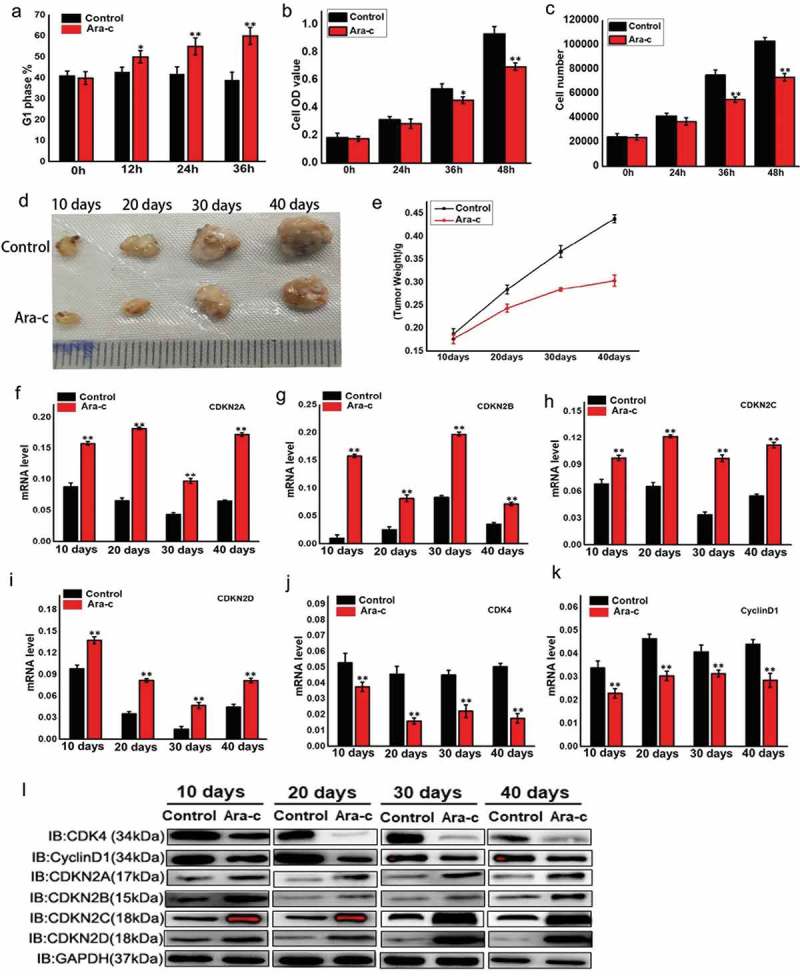Figure 5.

Ara-c regulates the cell cycle by modulating INK4 family genes and ultimately affects tumor formation and development.
(A) Flow cytometry analysis evaluating cell cycle changes after treatment with Ara-c at 0 h, 24 h, 36h, or 48h. Ara-c: cytosine β-D-arabinofuranoside, cytosine arabinoside, 4-Amino-1-beta-D-arabinofuranosyl-2(1H)-pyrimidinone, or arabinocytidine. (B) MTT reduction assay examining proliferation in OSRC cells treated with Ara-c for 0 h, 24 h, 36 h, or 48 h. (C) Flow cytometry analysis evaluating cell proliferation in OSRC treated with Ara-c for 0 h, 24 h, 36 h, or 48 h. (D) Tumor volume measurements for the extracted subcutaneous tumors. Tumor cells were injected subcutaneously into nude mice, while control mice were injected intraperitoneally with saline. The treatment group was injected with the same volume of Ara-c for 10 d, 20 d, 30 d, or 40 d. (E) Tumor weight measurements for the extracted subcutaneous tumors. Control mice were intraperitoneally injected with normal saline, and the treatment group was injected with the same volume of Ara-c for 10 d, 20 d, 30 d, or 40 d. (F-I) INK4 family genes expression levels in the extracted subcutaneous tumors. Control nude mice were intraperitoneally injected with saline, while the treatment group was injected with the same volume of Ara-c for 10 d, 20 d, 30 d, or 40 d. (J-K) CDK4 and cyclin D1 expression levels in the extracted subcutaneous tumors. Control nude mice were intraperitoneally injected with saline, while the treatment group was injected with the same volume of Ara-c for 10 d, 20 d, 30 d, or 40 d. (L) CDK4 and cyclin D1 protein expression levels in the extracted subcutaneous tumors. Control nude mice were intraperitoneally injected with normal saline, while the treatment group was injected with the same volume of Ara-c for 10 d, 20 d, 30 d, or 40 d.
